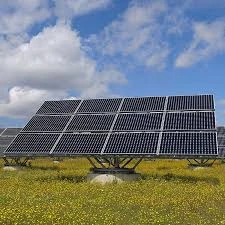Achieving 50 Percent Efficiency in Solar Panels for Enhanced Renewable Energy Production
The Future of Solar Energy Achieving 50% Efficiency in Solar Panels
In recent decades, solar energy has emerged as one of the most promising renewable resources available to combat climate change and reduce our reliance on fossil fuels. As technology advances, researchers are continually seeking innovations that can enhance solar panel efficiency. One of the most exciting prospects on the horizon is the achievable goal of 50% efficiency in solar panels. This leap in performance could revolutionize the energy industry, but what does it mean, and how do we get there?
Currently, most commercial solar panels operate with an efficiency range of 15% to 22%. This means they can convert only a fraction of the sunlight that hits them into usable electricity. Several laboratory prototypes have achieved efficiencies above 40%, mostly through the use of advanced materials and designs. A shift to solar panels that can reach 50% efficiency could dramatically increase the amount of energy harnessed from the sun, making solar power a more viable alternative to traditional energy sources.
Understanding Solar Panel Efficiency
Solar panel efficiency is defined as the ratio of the electrical output from a solar cell to the incident energy from sunlight. Higher efficiency means that solar panels can generate more electricity from the same amount of sunlight, which is especially important in areas where roof space or land is limited. Improving efficiency can also reduce overall costs per watt of electricity generated, making solar energy more competitive in the energy market.
Achieving a 50% efficiency rate in solar panels involves significant advancements in various technologies. Traditional silicon-based solar cells are limited in their ability to harness the full spectrum of sunlight. However, emerging technologies like multi-junction solar cells, perovskite solar cells, and tandem cells have shown great promise.
Multi-junction solar cells are composed of multiple layers of semiconductor materials, each designed to absorb different wavelengths of light. This layered structure allows these cells to capture a broader spectrum of sunlight, yielding higher efficiency compared to single-material structures. Research labs have reported efficiencies exceeding 46% for multi-junction cells, demonstrating the potential for future breakthroughs.
solar panel 50 efficiency

Perovskite solar cells represent another significant advancement in solar technology. These cells use a unique crystal structure that can be produced more cheaply and easily compared to traditional silicon panels. They have seen rapid improvements in efficiency, moving from under 5% to over 25% in just a decade. By combining perovskite cells with other technologies, such as silicon, researchers hope to create tandem cells that could approach or even exceed the 50% efficiency mark.
Challenges and Considerations
While the prospects for achieving 50% efficiency are thrilling, several challenges remain. Stability and longevity are two primary concerns. Many new materials, like perovskites, have not yet proven they can withstand environmental factors over extended periods, which is crucial for commercial viability. Additionally, scaling up laboratory successes to mass production while maintaining high efficiency and lowering costs will require careful engineering and innovation.
The economic implications of moving towards higher efficiency solar panels are also considerable. Developers and investors must consider the balance between cost and performance. While higher efficiency could mean more energy generation per square meter, the initial investment may be higher. Government incentives, subsidies, and advancements in manufacturing techniques could play crucial roles in bringing these advanced solar technologies to market.
Conclusion
The pursuit of 50% efficiency in solar panels represents a pivotal moment for the renewable energy sector. Achieving this goal would not only enhance the viability of solar energy as a leading power source but would also support global efforts to transition to a sustainable energy future. With ongoing research and development in materials science and solar technology, coupled with increasing support for renewable energy initiatives, the dream of highly efficient solar panels is becoming more attainable. As we continue to innovate and push the boundaries of what's possible with solar energy, the future looks bright—a future where the sun powers our world more effectively than ever before.
-
Understanding the Advantages of Solar String Inverters for Your Energy SystemNewsApr.29,2025
-
Choosing the Right PV Inverter: A Comprehensive GuideNewsApr.29,2025
-
The Future of Solar Power: Exploring Bifacial Solar PanelsNewsApr.29,2025
-
The Complete Guide to Solar Panels: Efficiency, Cost, And InstallationNewsApr.29,2025
-
The Best Options for Efficiency and Cost-EffectivenessNewsApr.29,2025
-
Harnessing the Power of Off-Grid Solar Inverters for Energy IndependenceNewsApr.29,2025







